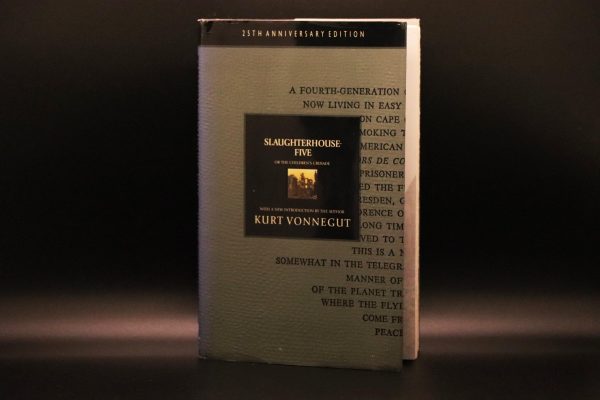The Murakami Effect: Inspired or Overwrought?
Haruki Murakami starts his novels with a title, or a pair of scribbled paragraphs tucked in a desk drawer. They progress at will, with no meticulous planning or artful scheduling.
“There is a white canvas, I have this paintbrush, and I just paint the picture,” Murakami said in an interview for The New Yorker.
The elaborate and intricately intertwined plotlines Murakami crafts leave no evidence of their unlikely roots as he masterfully weaves characters in and out of reality. His collected works demonstrate an uncommon talent for dipping the toe in the surreal, then diving into it headfirst.
Many of his most well-known novels, like “Kafka on the Shore”, “Norwegian Wood”, and “Colorless Tsukuru Tazaki and His Years of Pilgrimage,” follow a man on a journey—evading fate, unveiling the past, delving into the future, often assisted by, in some roundabout and strangely sexual manner, a woman.
Murakami has faced criticism for his portrayal of women, at times reducing them to objects, or the means by which his main characters, men, come to some deeper understanding of themselves.
“She takes you by the hand and leads you off somewhere,” Murakami said in an interview with novelist Mieko Kakawami, acknowledging the role many of his female characters have played as the gateway to some transformation of self.
It is true that Murakami has written many one-dimensional women, his renderings of them simplistic, reliant on the men by whom they’re accompanied and, at times, bordering on perverse. I have felt that unwelcome shiver when his writing fixates upon the breasts of a young girl or a dubiously consensual sexual act is born from a puzzling dream sequence.
There is surely questionable content within his writing, but his approach to it is, in a sense, reassuring. There is an almost clinical way in which Murakami writes about sex, bodies and desire. Perhaps this must be accredited to the translator, but there is always a lack of eroticism—a lustless quality. A woman is reduced to her breasts, but in a distant way. His first-person character observes her, analyzes her, perhaps his mouth waters, but there is a disconnect in the prose—one in which everything is tinted through the eyes of an observationist. It is, perhaps, the surplus of details that Murakami provides that allows for this separation.
Perhaps this observational style could excuse Murakami: everything is written with depth and intensity to progress the story, to add dimension to the worlds he builds, to immerse the reader in a character. And yet, I do not find that many of these instances advance the story in any meaningful way, but rather serve as stylistic choices, contributing to the rather peculiar nature of Murakami’s writing.
I would not move to wholly condemn Murakami, but I would question why these themes are so prevalent throughout his work. He vehemently denies, in various interviews, that these unsavory depictions are intentional, insisting that the interactions between characters are his focus, while individual characterizations are, for the most part, coincidental—a result of the necessary interactions they have in order for the story to progress. I would then question why these necessary interactions have so often required a woman as an avenue for the becoming of a man (to be used and then departed), that these characters have become a trademark of Murakami’s work.
What leaves me unable to pass judgment are those of Murakami’s women who really are well-rounded and complete. Take Sleep, a short story by Murakami, and his first writing from the perspective of a woman, for instance. The aforementioned Mieko Kakawami described the story as instilling in her a sense of trust in Murakami, with which I can agree. Sleep comes across to me as an analysis of every-day life and every-day death, detailing the changes made upon a woman as she finds herself unable to sleep. She begins to reconsider everything in her life, and her perception changes: of her loved ones, of herself and of her existence. She is vivid, and the men who surround her are extensions of herself, existing to flesh her out, just as Murakami’s women often serve as extensions to his men. Her characterization leads me to believe that Murakami really does write characters in the interest of the big picture, and men are just his usual vessel, his usual protagonist; however, Sleep proves that he can create female protagonists who are just as all-consuming.
The other criticism, almost praise, I will levy upon Murakami is his ability to write about nothing at all for a great deal of time. His works are riddled with references: literary, historical, musical and mythological. Some are valuable, take his ode to Oedipus in Kafka on the Shore for example: a mythological theme which the events of the story orbit around. However, the vast majority of the references come at random, as if simply to prove that Murakami is well-versed in the arts. Mid-paragraph, Murakami will make citations of obscure philosophical works, or dive deeply into the discography of a musician—mentioned only to explain the presence of their record on a coffee table.
Murakami writes novels up for interpretation, the kind with subtleties that you could analyze for a decade, only to find that the author had meant absolutely nothing by it. Reading his work often feels like wandering through a trance in which anything at all could happen: in Killing Commendatore a two-foot man emerges from a painting to demand his own death at the hand of the protagonist so that the painting from which he was born might be recreated. Sometimes this seeming randomness works to the advantage of the work, keeping the reader intrigued, if slightly addled, while in other works it leaves the reader confused, puzzling at a mess of metaphors and very little substance.
It has been said that if you have read one of Murakami’s works, you have read them all, but I find myself unable to resign myself to a firm stance on that judgment. Read two, and decide for yourself.















